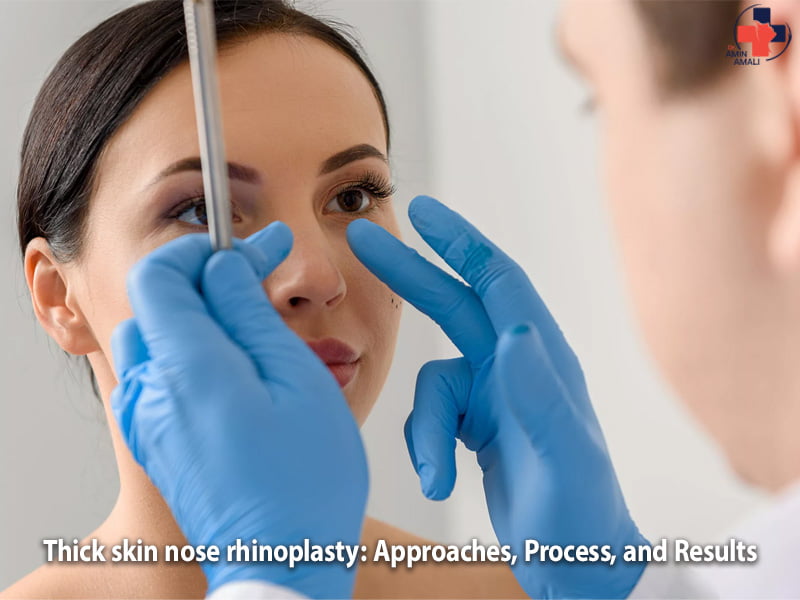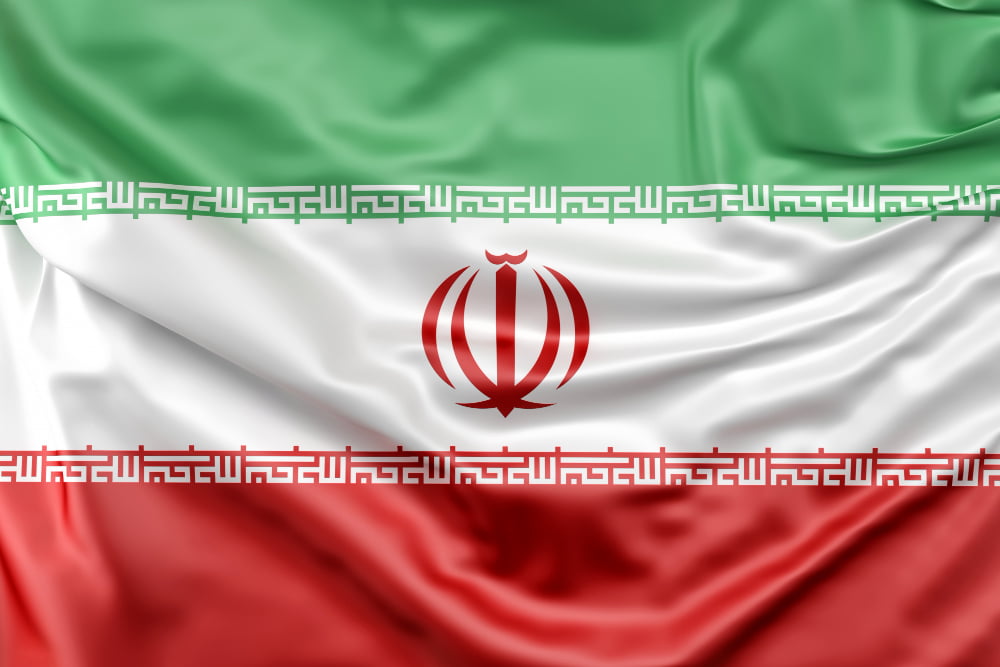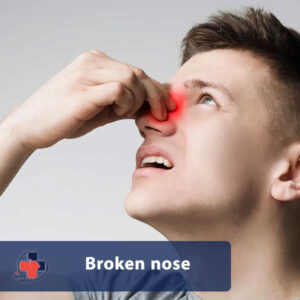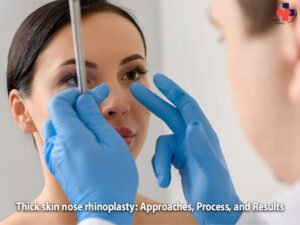You might be one of those individuals with a bulbous (fleshy) nose who is considering taking steps toward rhinoplasty. Bulbous noses typically have a wide structure, which can affect the overall aesthetics of the face. If you’re a candidate for bulbous nose surgery, one of your main requests from the surgeon is likely to create a defined contour line, transforming the nose from a flat and wide shape into a more refined and attractive form. Like any surgical procedure, thick skin nose rhinoplasty comes with its own set of benefits, potential side effects, various surgical techniques, and more — all of which will be explained in detail below.

How to Identify a Thick Skin Nose?
To determine your nose type, a surgeon will examine the thickness of your nasal skin and the strength of the bone and cartilage structure that forms the nose. In bulbous noses, the skin is usually thicker, and the underlying bone and cartilage tend to be weaker.
In many cases, the tip of a fleshy nose is made of soft cartilage, which gives it a rounded or “bulb-like” appearance. This softness and lack of structural support are key characteristics that help distinguish a bulbous nose from other types.
What Is the New Technique for Rhinoplasty on Bulbous Noses?
In recent years, a new technique called structural rhinoplasty (or reinforcement rhinoplasty) has been introduced for performing nose surgeries on patients with bulbous noses. This method is particularly suitable for individuals with thick skin and an abundance of soft tissue in their nasal area.
In this type of rhinoplasty, rather than removing excess tissue, the surgeon focuses on strengthening the nasal structure. This is typically done using the patient’s own cartilage. For bulbous nose surgery, cartilage may be harvested from other parts of the body, such as the ear or rib.
The surgeon then places this cartilage in specific areas of the nose to reshape it. This reinforcement allows the skin to rest on a firmer framework, giving the nose a more defined appearance. Moreover, this method helps preserve proper nasal function and breathing.
One of the main advantages of this approach is that it tends to produce more natural-looking results. Additionally, the likelihood of the nose returning to its previous shape is lower with this method. However, it’s important to note that full recovery may take several months, as the skin needs time to adapt to the nose’s new structure.
Factors Influencing the Results of Thick Skin Nose Surgery
While the results of thick skin nose surgery are often permanent, they can be influenced by various factors. Here are some key considerations regarding the outcomes of this surgery:
- Clarity of Expectations: Clearly communicating and understanding expectations before surgery is crucial. Your rhinoplasty surgeon should discuss and comprehend your expectations to explain the achievable extent of changes.
- Surgical Complexity: The complexity of the surgery can significantly impact the results. Some cases may require more intricate procedures, affecting the final outcome.
- Individual Factors: Personal factors such as age, nasal structure, and overall health can also play a role. Individuals may experience different rates of recovery based on these factors.
- Postoperative Care: Proper postoperative care is essential. Adhering to the surgeon’s instructions, taking prescribed medications, and following postoperative care guidelines can reduce complications and promote quicker recovery.
Different Techniques in Thick Skin Nose Surgery:
While thick skin nose surgery falls under the broader category of rhinoplasty, most techniques can be applied. However, due to the specific characteristics mentioned earlier, there are limitations in performing certain techniques for thick skin nose surgery. The primary categorization of rhinoplasty techniques includes open and closed approaches.
Open Technique:
This method is slightly more invasive and may result in a longer recovery period. However, it often produces better results. It is commonly used for surgeries involving bony noses, and its application in thick skin nose surgeries is limited.
Closed Technique:
This technique involves fewer incisions, leading to a significantly shorter recovery time. However, it imposes constraints on the surgeon, making it more challenging to perform extensive changes. This limitation makes it suitable for certain types of surgeries, especially thick skin nose surgeries, where extensive alterations are unnecessary.
Choosing the Best Nose Shape for Bulbous Nose Rhinoplasty
Selecting the right nose shape for rhinoplasty on a bulbous or thick skin nose requires more precision and subtlety compared to bony noses. This is mainly due to the thicker skin and weaker cartilage in fleshy noses, which present unique challenges for the surgeon and make achieving ideal results more complex. Below are some key points to consider when choosing the best model for fleshy nose surgery:
- Facial Harmony:
The chosen nose shape must be in proportion with other facial features. The nose should not be made too small or too large—it should match the overall facial structure. An experienced rhinoplasty surgeon can evaluate your facial proportions in detail and recommend the most suitable shape for your face. - Preservation of Nasal Function:
Maintaining proper breathing function is just as important as achieving a beautiful appearance. In rhinoplasty for fleshy noses, the surgeon must ensure that the nose not only looks good but also functions well. Using the right techniques and working with precision during surgery helps prevent breathing issues post-operation. - Limitations of Bulbous Noses:
It’s important to be realistic and align your expectations with the limitations of fleshy noses. Due to thicker skin, creating sharp curves or a highly “doll-like” nose can be more difficult and may not yield ideal outcomes. An experienced surgeon will offer honest advice and guide you toward a more realistic and suitable nose shape. - Popular Nose Shapes for Bulbous Noses:
Despite the limitations, several nose shape models can still be considered for fleshy nose surgery. These include:- Natural Model:
This model involves subtle and barely noticeable changes. The result is a nose that looks natural and balanced with the rest of the face. It’s often considered the best option for bulbous noses. - Semi-Fantasy Model:
A slight curve is added to the nasal bridge, and the tip of the nose is made slightly more refined. - Doll-Like (Fantasy) Model:
This model involves more noticeable changes, including a sharper nasal bridge curve and a significantly refined nasal tip.
- Natural Model:
Ultimately, the best nose shape for your bulbous nose surgery depends on your personal preferences, your surgeon’s recommendations, and how well the chosen shape complements your facial features.
Preoperative Measures for Thick Skin Nose Rhinoplasty:
Before undergoing thick skin nose surgery, there are crucial measures that can contribute to a smoother and more successful procedure. These measures include:
- Consultation with the Surgeon: The initial meeting with the rhinoplasty surgeon is essential. Discussions should encompass your needs, expectations, and a detailed explanation of the surgical process.
- Imaging and Evaluation: The surgeon may use imaging techniques, such as a nasal CT scan, to assess the precise nasal structures. This information aids in planning a more accurate surgical procedure.
- Medication Adjustment: The surgeon may advise discontinuing specific medications, especially those that thin the blood, in the weeks leading up to the surgery. Full disclosure of your current medications is crucial.
- Smoking Cessation: Ceasing smoking several weeks before surgery is advisable. Smoking can significantly impact the healing process and surgical outcomes.
- Education on Postoperative Care: The surgeon will provide instructions on prepping for postoperative care. This includes dietary changes, rest, and prescribed medications.
- Psychological Preparetion: Mental and emotional readiness is crucial. Being prepared for changes in physical appearance is essential for a positive postoperative experience.
Note:
Consultation with Your Surgeon- Always consult with your surgeon regarding any dietary restrictions or recommendations specific to your recovery. They may provide personalized advice based on your surgery and individual health needs.
Patience and Monitoring- Remember that the recovery process is unique to each individual. Listen to your body, and if you notice any adverse reactions to certain foods or if something doesn’t feel right, consult with your surgeon.
It’s important to note that postoperative nutrition is just one aspect of the overall recovery process. Follow your surgeon’s postoperative care instructions diligently, attend follow-up appointments, and communicate any concerns or changes you observe. A well-balanced diet, coupled with proper care and patience, contributes to a smoother and more successful recovery after thick skin nose rhinoplasty.”












